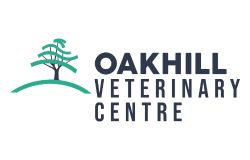Many of you may have noticed the characteristic helicopter seeds present on sycamore trees as of late so we thought it would be a good idea to remind you about sycamore poisoning. But what exactly do we mean by the term sycamore poisoning? Keep reading to find out more!
Sycamore poisoning, also known as atypical myopathy, is a devastating, highly fatal muscle disorder that occurs following the ingestion of hypoglycin A toxin. The toxin is found in a number of plant species, the most common in the UK being the leaves, seeds and seedlings of sycamore trees hence the term sycamore poisoning.
There is sadly a 75% fatality rate with most non-survivors succumbing within 72 hours of the development of clinical signs.
Cause
The disease occurs following the ingestion of sycamore seeds or leaves in Autumn or seedlings in Spring that contain the hypoglycin A toxin. It should be noted that the toxin is not present in all sycamores. There is also speculation that toxin levels may differ at different times of year and under different climatic conditions. Cases often follow an adverse change in weather conditions such as frost or rain.
Clinical Signs
Affected horses show clinical signs of weakness, stiffness, muscle tremors, a fast (sometimes irregular) heartbeat, difficulties in breathing and dark red/brown coloured urine. Other clinical signs include depression and signs of colic. Severely affected horses become recumbent and others may be found already deceased.
https://www.high-endrolex.com/19
Diagnosis
Diagnosis of atypical myopathy is based on the presence of compatible clinical signs, a history of grazing pasture containing sycamore trees and physical examination and blood work findings.
Supportive blood work includes evidence of dehydration and an exponential increase in muscle enzyme values with or without increased kidney enzyme values. We are capable of running this blood work in-house with a rapid turn-around time on results.
For the definitive diagnosis, blood, with or without a urine sample, are submitted to the Royal Veterinary College for analysis. Results take a number of days to return and therefore, if a diagnosis of atypical myopathy is suspected, then the affected patient should be treated as such. Time is of the essence and rapid initiation of treatment is essential to improve prognosis.
Treatment
Suspected cases are generally hospitalised to facilitate intensive medical management. Treatment is predominantly based on supportive care including administration of large volumes of intravenous fluid therapy. As affected patients are generally quite painful, the provision of adequate pain relief is vitally important. One study has also shown the administration of vitamins to be advantageous.
Prevention
Prevention is based on preventing exposure to sycamore seedlings in Spring and seeds and leaves in Autumn. The area surrounding sycamore trees should be fenced off and the seeds and leaves collected. It is important to remember that the helicopter seeds may travel up to 200 yards. Therefore, pasture beyond the sycamore tree should be searched for seeds.
Remember not all sycamores contain the hypoglycin A toxin but prevention is better than cure.
The Royal Veterinary College (RVC) offer testing to identify plants containing the toxin. You may submit seeds, leaves and seedling directly to the RVC Comparative Neuromuscular Laboratory to determine if plants on your property contain the toxin. Test results are generally available within 2-3 weeks but can be available within 72 hours for an additional fee. If interested, please consult your veterinary surgeon for further information.
Some may ask if their horse has grazed for many years on pasture containing sycamore trees without any issues, if their horse is at risk? The answer is yes. Risk is reduced by following the steps outlined above in addition to considering laboratory analysis of the sycamores for the presence of the hypoglycin A toxin.
